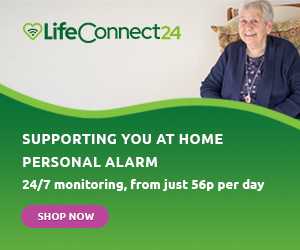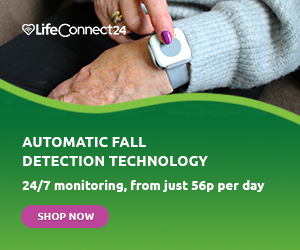Keeping fit is crucial in life, especially as we get older. Regular exercise helps strengthen bones and muscles, as well as improving heart health. However, it isn’t always easy to find the right exercises for you. One of the more enjoyable options for the elderly is to get involved in dance.
However, there are many dance styles, and some could be taxing on the body. This is especially true for people living with long-term health conditions. With that in mind, we are listing the five best dance styles for retirees to try.
Why Try Dance?
Getting involved in dancing is a great way to work out and have fun doing it. One of the main advantages is how dancing improve heart health. Poor heart health can contribute to conditions such as coronary heart disease. Dancing helps to improve blood flow and circulation.
Naturally, physical activity helps to promote muscle strength. Stronger muscles help to improve balance, with can reduce the risk of falls. Improving muscle health can also have other advantages, such as reducing joint pain and the likelihood of straining yourself.
Your mental health will also benefit from dancing. Humans have a strong connection to music, and dancing is no fun without something to dance to. This can help to boost your mood. The endorphins produced during exercise can also help in the fight against dementia and other mental health conditions.
Furthermore, getting involved with dancing through dance classes can also have social benefits. You will meet plenty of new people, some of whom could become friends. This could help to expand the number of activities you take part in outside of the home, which could become easier with all the added energy that comes from regular exercise.
Dance Styles for Retirees
In later life, it’s important to be mindful of what your body can do. Low-impact sports and exercises are recommended for people in their 60s and older, as they have less of an effect on joints and bones. This lessens the likelihood of pain and stress fractures. As a result, you probably won’t be taking up ballet or breakdancing any time soon. Fortunately, there are several dance styles suitable for retirees.
1. Waltz
The waltz is a classic style of dance performed in triple meter. If you don’t know what that is, you will learn as you start practicing. A waltz involves two people dancing together in a rise and fall motion, turning as they move. Some waltzes are fast, but there are plenty of slow waltzes to get you started.
This could be an ideal dance style to take up if you want something classical and distinguished. It will get the blood pumping without being too taxing on your joints and is perfect for learning with a partner.
2. Square Dancing
For a dance style more about fun than style, try square dancing. This is a great way to exercise with others, and a style that is very welcoming for beginners. At every square dance, there is a caller who provides instructions to the dancers, so you’ll learn quickly.
Taking part in a square dance is sure to get the heart pumping and help you build up a sweat. However, the moves aren’t too taxing on the body and will keep you moving without straining anything.
3. Rumba
For a dance style that prioritises rhythm over showy movements, consider the rumba. This dance style involves staying on spot, sticking to a slow rhythm. In some ways, it is a less mobile waltz. At its core, the rumba is defined by performing two fast steps followed by a slow backward or forward step. In its simplest form, the rumba is easy, but you can up the difficulty as you get used to it.
This is another dance performed with a partner, and there are different moves for the male and female partner. As you improve your strength and coordination, you can advance to faster Latin dances – such as the salsa – without worrying about losing balance.
4. Jazz Dance
In a jazz dance, you perform quick moves that don’t put too much strain on the rest of the body. Whilst you may need to start slow, especially with moves requiring your legs to cross over, jazz dancing is great for a quick workout to some good music. As you practice, you will be able to increase the tempo of your dances.
This dance rose to prominence in the last century, combining European and African styles. You can count on this dance to boost your cardiovascular system and work muscles throughout the body without leaving you too exhausted.
5. Seated Dancing
Mobility limitations shouldn’t stop you from getting involved in dancing. You can remain in the comfort of your chair and still tone your muscles and burn calories. Regular seated dancing can help to improve your flexibility and have fun.
Moreover, seated dancing is easy on your joints. You will improve your health, and it may help you take up other forms of dance in future. You can find videos to get you started online, including on YouTube.
Getting Started with Dance
There are many ways to make a start with dance. Whether you choose to practice at home using videos on YouTube or find dance classes, you can learn at your own speed. No one is expecting you to become an expert straight away. The important thing is that you are keeping active and building your strength.
Local community centres and gyms may have classes that you can attend. There may also be local events where you can put your dancing skills to the test.
If you are looking for other hobbies to try, read our 15 Hobby Ideas guide.
Reassurance at Home
When taking up a new exercise routine, it’s important to take things slow and be aware of your limits. For extra reassurance, consider purchasing a LifeConnect24 personal alarm to make sure help is always available if you experience a fall.
With a personal alarm, you press the button on your pendant or base unit when you need support. This sends an alert to our Response Team who will assess the situation and arrange help by informing your emergency contacts or the emergency services.
To find out more about our service, read our in-depth guide or view our products. If you have any further questions, please do not hesitate to get in touch. Call on 0800 999 0400 to speak with our helpful team or use our simple contact form.



Leave A Comment